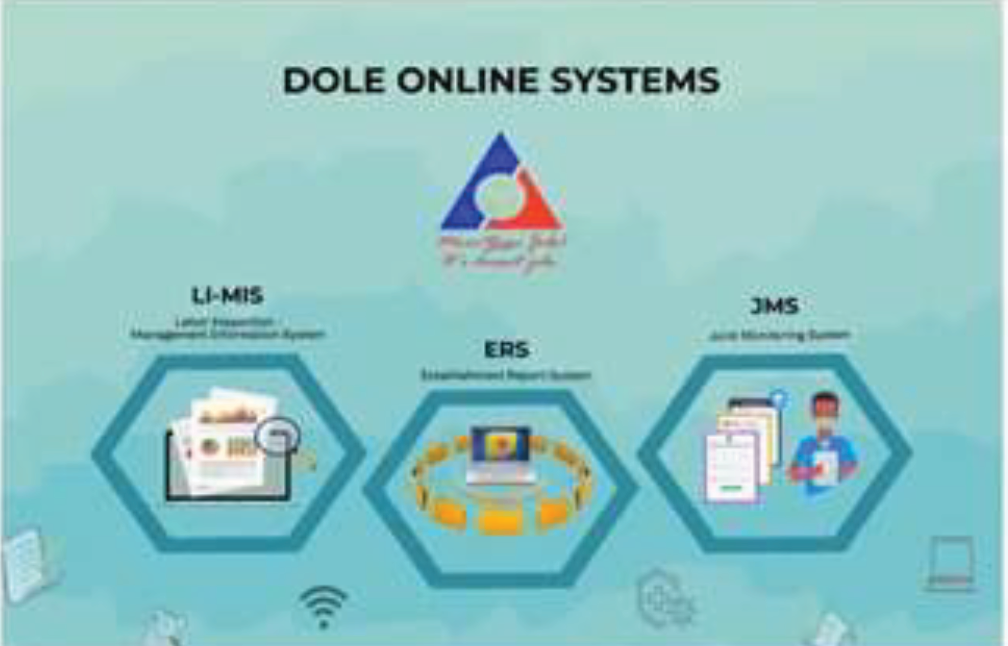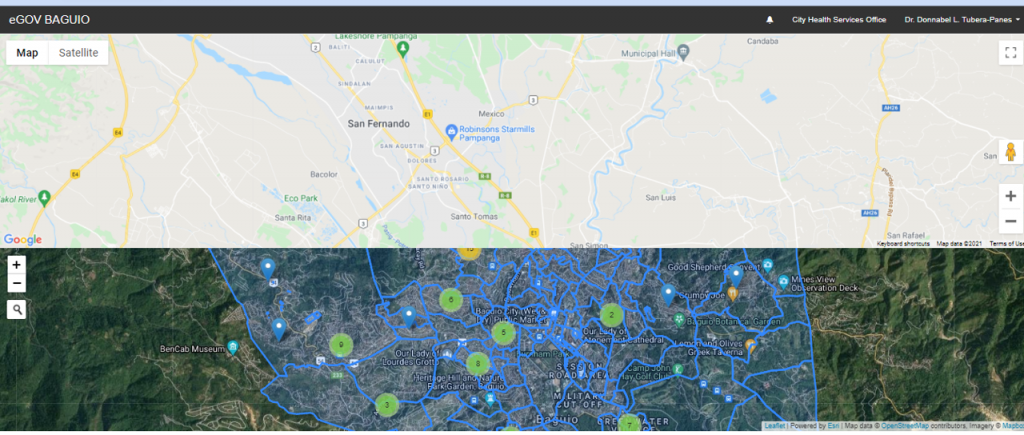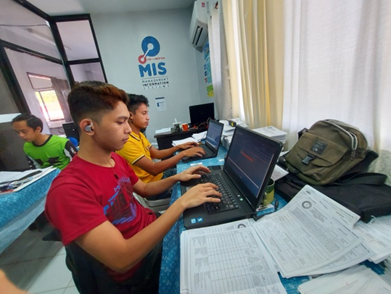Title
Effective Resource Generation and Mobilization: An Inclusive and Transformative Solution for Tumauini’s Development (eRemit)
Organization
Municipal Government of Tumauini, Isabela Best Practice Focus Area/s: Leadership, Strategy, Operations
Year Implemented
January 2016
Summary
To accelerate the development and progress of its municipality, the Tumauini LGU implemented
the Effective Resource Generation and Mobilization: An Inclusive and Transformative Solution for Tumauini’s Development program (eRemit), which organizes the sourcing and distribution of municipal funds to effectively and efficiently implement the priority programs, projects, and activities identified in the local administration’s approved development plans.
Background and Problem
Before adopting eRemit in 2016, the pace of development of Tumauini was slow, as the LGU was too dependent on its 20% Development Fund (DF), which proved to be insufficient for financing the development initiatives of the local administration, especially while collections of locally-sourced revenue were extremely low.
Due to this situation, the LGU was unable to implement its planned programs and projects, which were deemed necessary to address the issues and concerns of its constituents. This has resulted in the continued prevalence of long-standing problems such as high poverty incidence, unemployment, poor quality of education, increased morbidity and mortality rates, low agricultural productivity, inefficient public service delivery, lack of access to economic activity, and the vulnerability of communities during disasters.
Solution and Impact
To effectively respond to the myriad problems plaguing their community, the Tumauini LGU developed eRemit to best manage and mobilize the municipality’s available funds towards attaining inclusive growth and development. This allows the LGU’s various units to implement their priority programs, projects, and activities with the confidence that they would have the resources needed to see them through.
The different practices instituted through eRemit are as follows:
- Establishment of organizational credibility for collaborative partnerships. The municipality strives to maintain its Seal of Good Local Governance (SGLG) and Seal of Good Housekeeping (SGH) as proof to stakeholders of the LGU’s integrity and quality performance.
- Formulation of development plans for collaborative partnerships. All projects requested for funding are contained in the approved development plan and identified and prioritized during consultations with stakeholders. Active participation and shared decision-making among stakeholders are also ensured during the planning process.
- Creation of Resource Mobilization Technical Team (RMTT). The Tumaini LGU’s RMTT is composed of the Municipal Mayor as Chairman, and its members are the Municipal Administrator, Municipal Engineer, Municipal Agricultural Officer, Municipal Planning and Development Coordinator, Municipal Social Welfare and Development Officer, Public Employment Service Officer, and Local Economic and Investment Promotion Officer. They are tasked with preparing project requirements such as proposals, financial statements, detailed engineering designs and programs of work for infrastructure projects, beneficiary profiles, and other documents for submission to a wide range of potential donors for their consideration during budget preparation.
- Establishment of strong leadership and linkage with resource providers/investors. The Municipal Mayor and the RMTT submit their proposals to possible resource providers, opening doors for potential partnerships. The LGU maintains a directory of NGAs and private sector organizations as potential donors for proposed projects and future undertakings.
- Creation of the Project Monitoring Committee(PMC), Inspectorate Team (IT), and Project Implementation Team (PIT) via Executive Order. The establishment of PMC, IT, and PIT further enhance good governance through clear, transparent, accountable, and responsive public service delivery.

Once the LGU receives the funds, the PIT immediately implements the project as stipulated by municipal policy or the Memorandum of Agreement with the project’s donor. The PMC monitors the project, identifies issues and recommends remedial actions, prepares reports, and updates the MDC on the status of project implementation. The IT conducts a preliminary inspection if the project reaches an accomplishment of 95% of the total contract amount and submits a project punch list to the contractor in preparation for final project turnover.
All resources mobilized are monitored by resource partners, technical teams, and beneficiaries for accountability. The fund utilization and project status are posted in the Full Disclosure Policy Portal of the Department of the Interior and Local Government (DILG), as well as on bulletin boards located in three conspicuous places within the municipality. With the LGU’s full compliance with these requirements, the relationship with resource partners is fostered for mutual trust and benefit.
The immediate impacts of the resource mobilization efforts are as follows:
- Increased literacy rate from 88.73% to 99%
- Increased percentage of concreted roads from 21.12% to 90%
- Sustained zero maternal mortality rate
- An average increase in capital investment of 5.6%
- Increased tourist arrivals (ranked 8th in Region 02 in 2018)
- Decreased in the unemployment rate from 39.9% to 5.4%
- Decreased poverty incidence from 27.60% to 15.60%
The continued implementation of eRemit is projected to lead to Tumauni attaining cityhood in about five to eight years, with a competitive economy and growing tourism industry. The quality of life in the municipality has increased dramatically thanks to the projects implemented through eRemit, and the community’s goals are attained due to sharing resources and sustained good governance.

Milestones/Next Steps
The total funds from various resource partners from 2016-2020 under the eRemit amounted to Php 3,775,732,056.73. Included in this amount are the following:
On Infrastructure:
- Concreted 73,108 m. of local roads/farm-to-market roads=PhP507,682,482.54
- Construction of 75 m. Dy-Abra overflow bridge=PhP44,221,629.63
- Opening of 3.7 kms of access road in Antagan 1st=PhP41,000,000.00
- Purchased 7 heavy equipment for infrastructure projects=PhP10,618,000.00
On Economic Development:
- Constructed a public market facility=PhP100,000,000.00
- Constructed 18,300 m. concrete irrigation canals=PhP210,977,851.04
- Constructed 4 SWIPs=PhP45,120,157.05
- Implemented livelihood programs benefiting 2,773 displaced workers=PhP27,247,050.00
- Constructed 2 multi-purpose tourism buildings=PhP5,200,000.00
- Constructed 1 cooperative building with fishpond facility=PhP3,500,000.00
- Provided 11,529 bags of palay hybrid seeds, 6,865 bags of hybrid corn seeds, and 1,770 bags of fertilizers that benefited 5,677 rice farmers and 6,865 corn farmers=PhP42,482,800.00
- Provided 195 fishing equipment (boat and gears) to 175 fishermen including dispersal of 783,000 fingerlings to 244 fishpond owners=PhP1,465,000.00
- Provided economic relief assistance to 2,667 farmers=PhP124,707,500.00
- Constructed 8 MPDP=PhP2,660,000.00
On Social Development:
- Constructed of 291 classrooms=PhP559,728,727.58
- Phase Construction of Multi-Purpose Building (Gymnasium)=PhP60,000,000.00
- Constructed a regional evacuation center=PhP70,158,202.57
- Constructed 5 waters systems=PhP49,138,309.64
- Repaired the Tumauini Cultural and Sports Center=PhP17,705,906.26
- Constructed a 16-bed hospital building=PhP15,250,000.00
- Constructed 3 IDA health centers with lying-in clinic=PhP7,690,000.00
- Implemented supplemental feeding program benefiting 3,194 undernourished children=P5,749,973.24
- Purchased 1 ultrasound machine with complete accessories=PhP2,688,000.00
- Repaired 26-day care centers=PhP2,614,029.28
- Constructed 1 hospital dormitory=PhP2,500,000.00
- Purchased 2 fiber boats for search and rescue operations=PhP1,800,000.00
On Environmental Management:
- Constructed 5,361 linear meters concrete drainage canal=PhP321,599,937.85
- Constructed 4 flood control systems=P130,000,000.00
- Established 10-hectare SLF facility=PhP8,754,776.00
- Purchased 2 units garbage compactors and 1 unit crawler loader for SLF=PhP6,100,000.00
- Constructed 2 mini parks=PhP400,000.00
On Institutional Development:
- Phase Construction of New LGU Multi-Purpose Building=PhP79,999,822.32
- Constructed 13 barangay multi-purpose buildings=PhP31,500,000.00
- Constructed three office buildings and one staff quarter for NIA-TIS employees=PhP107,200,000.00
The total resources mobilized were commended during the 2019 SGLG National Validation. For the second time, Tumauini was conferred with the prestigious SGLG by the DILG on November 4, 2019, at the Manila Hotel. The LGU also passed the SGH due to its full compliance with FDPP, which entitled the LGU with a Performance Challenge Fund (PCF) subsidy amounting to P2 Million in 2018 and P3.2 Million in 2019.
At present, the Municipal Mayor, who is also the President of the Isabela Chapter of the League of Municipalities of the Philippines (LMP), is helping other LGUs by sharing the best practice and endorsing them to different resource providers with whom the Tumauini LGU has established strong partnerships so that they too can request funds for their planned and unfunded programs and projects. The LGU shall endeavor to expand its resource mobilization partnerships not only at the local and national levels but also internationally with the endorsement of the Regional Development Council (RDC) for Region II and the national government, especially for proposed big projects, such as a hydropower facility and a small-scale dam, for the continuous growth and development of the municipality.


























